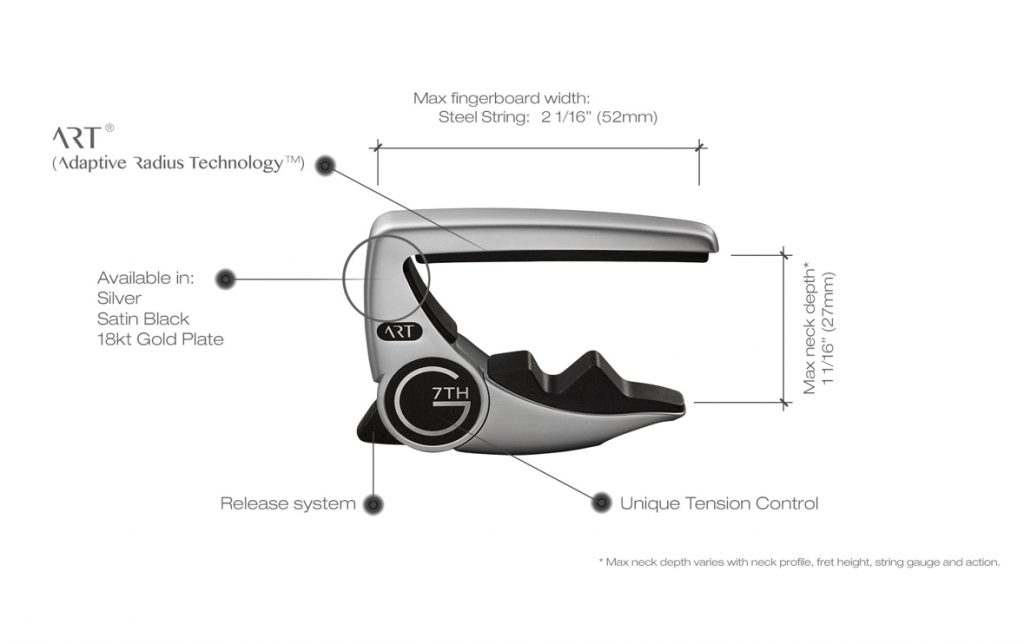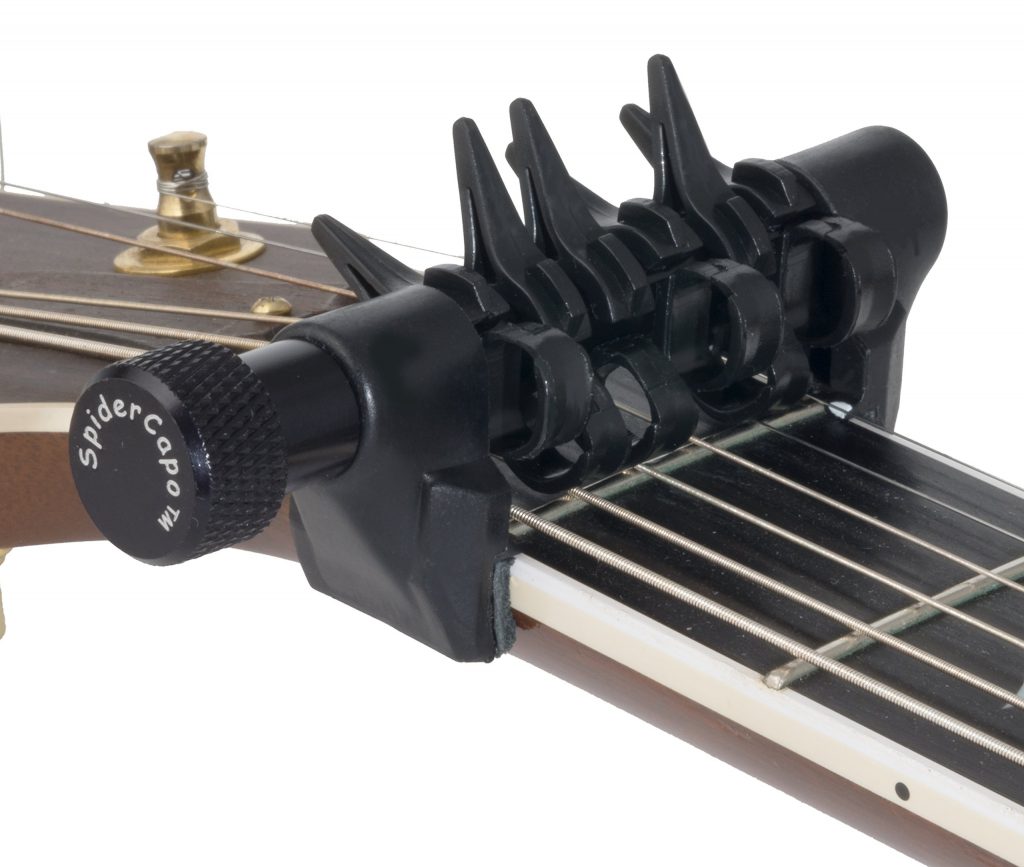Can't do barre chords? Your ultimate guide for guitar capos
Capos, what are they? Well, one thing they are not are those little round salty/sour things that go well with salmon and cream cheese on rye bread or a bagel, or a spicy spaghetti puttanesca. Those are capers and have nothing to do with playing the guitar, unless you’re playing in an Italian restaurant.
A capo is a small clamp-like device that when applied to the neck of a guitar, shortens the length of the strings and raises the pitch, allowing you to play open-string chords in any key. But you knew that already, didn’t you?
Read all the latest features, columns and more here.
It’s basically for people who can’t do barre chords. You know, those weak-fingered folk, who just don’t have the hand strength to push six skinny strings a mere few millimetres onto the fretboard. Pre-covid you could pick them by their limp or even non-existent handshake, but in these post-covid times you can recognise them because they have to use a capo to make a B flat minor 7 chord.
But it’s not just for them. Even if you are a barre chord master, a capo frees up your index finger, giving you an extra digit to play chords that would otherwise be impossible – unless you are one of those six-fingered freaks with an extra pinkie. (It’s called Polydactyly. Google it.)
Before the invention of the capo, if you wanted to play open-string chords in different keys you had to have a whole slew of guitars each with a neck one fret shorter than the next.
But the question on every guitarist’s lips is, how do you pronounce ‘capo’? Well, there are two ways – you can pronounce it cay-po, or you can pronounce it capp-o. One of them is correct and the other is incorrect, but I’m not going to tell you which is which. You’ll have to work it out by trial and error.
Actually, the reason I’m not telling you is, I have no idea. It can go either way as far as I can tell. Of course, if you want to sound cultured (i.e., a wanker) you could pronounce it the Italian way, Cah-po, and throw in some gesticulation for emphasis at the same time.
To be fair, which ever way you say capo, you’re still going to end up sounding like a bit of a tosser. You can avoid this by calling it a guitar string shortener, or a neck-clamp, if you like.
Another question I’m asked: What does capo stand for? It’s got to stand for something, right? Can Apply Pressure Overall? Chords Abound Previously Obscured? Creative Appliance Provides Ovations? You wish.
Capo isn’t an acronym for anything. It’s short for the Italian word Capotasto, which means “head of fretboard,” or “head button” according to google translate. Capo is also Italian for “mafia boss”, which is why you should never fuck with your capo, or you might end up sleeping with the fishes.
But not all capos are alike. There are a variety of different kinds of capos, including the cradle, spider, strap-on(!), and toggle. But the most popular is the trigger capo, followed by the screw capo. The trigger or spring capo is for quick-draw guitar slingers who want to change keys at lightning speed, while the screw capo is better for those more considered strummers and pluckers who just want to stay in the same key all night.
There are also partial capos, that only cover some of your guitar’s strings, leaving the others open, giving you the best of both worlds, and allowing you to create alternative tunings, drone strings, or new chord voicings. You can even use two partial capos and create some weird-arse open tunings anywhere on the neck.
So, what are the best capos available today? Google it – that’s what I did, and I found that arguably the best capo on the market in 2022 is the G7th Performance 3, but at around $75 or more, it’s also one of the most expensive. (And if money’s no object there’s a gold-plated version for upwards of $100.) Simply squeeze it to attach and squeeze it to release. It’s easily adjusted with one hand, leaving you other hand free to, you know… strum, of course!

Also highly recommended by the ‘interverse’ is the Shubb Capo, which is somewhere between a trigger capo and a screw capo, giving you the best and worst of both worlds. It has a trigger mechanism for easy release, and a screw for reliable string tension.
In the trigger or spring category, it’s harder to pick a winner. Everyone seems to make one. Maton, Dunlop, Ibanez, and Kyser all make excellent trigger capos that fall into the more affordable category.
Kyser in particular are one of the best-selling capo manufacturers worldwide with company founder Milton Kyser inventing the quick change capo we know and love today just over 40 years ago. His niece Meredith McClung Atteberry runs the company these days which still exclusively manufactures in the small town of Kauffman in Texas (approx. population of 3,500).
They remain one of the most trusted capo brands out there with their affordable price point certainly a bonus.
For those looking to play it safe or play their many guitars with one capo, the universal Ernie Ball-designed Axis capo fits any guitar and situation. The dual-radius design fits both flat and curved fretboards and is compatible with most electric and acoustic guitars.
In the best screw capo category, the D’Addario Planet Waves Capo is hard to beat. It comes in varied prices with Pro and Lite versions.
In the weird category you can’t go past the Spider Capo, which has six ‘fingers’ (Polydactyly, remember?) that allows you to leave some strings open and others capo’ed, for want of a better word. With fine-tuning on each string, it is the only capo you can actually get exactly in tune.

If you want a capo that’s both fancy and schmancy, Thalia Capos are made with exotic woods and abalone shell inlays.
In the novelty capo department, who wouldn’t want a Shark Capo? It looks like a small-but-feisty shark has clamped its jaws around the neck of your guitar. Watch out for your fingers! Shark Capos are available on Amazon or wherever good-but-stupid guitar accessories are sold.
Of course, if none of these float your musical boat, or you just don’t want to spend good money on something you’ll only use once or twice, why not make your own capo? All you need is a pen or pencil, and a rubber band or two, for your very own McGyver-style capo. Place the pen on the desired fret, put the rubber band over the one end of the pen, around the back of the neck and over the other end of the pen. The beauty of the DIY capo is you have a pen to sign autographs after the gig, or rubber band to flick at any hecklers during the gig.
And that’s all you need to know to become a capo’d crusader. So what are you waiting for? capo diem! Seize the capo, any capo!
Head here for more on guitar capos.







